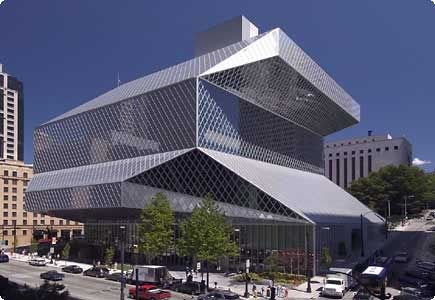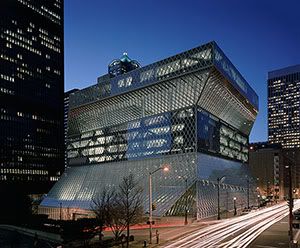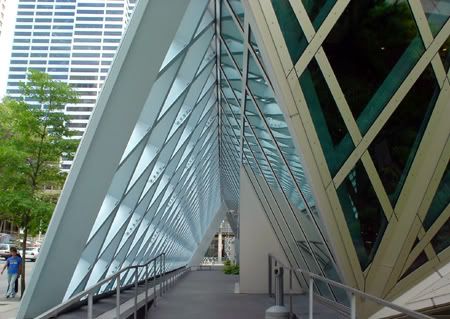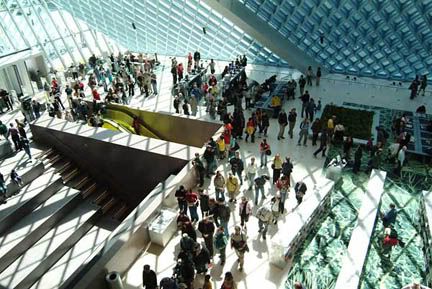Walking around Manhattan as a little kid and seeing, I don't know what to call them, "Buildings of the Future", or something; where beams don't touch what they're holding up, or undulating waves are created by bent glass walls of windows, was a wonderful experience.
It's just so compelling to know that human beings daily lives interact with these mammoth works of art.
There's an exhibition at the MoMA now through March 2009 called Dreamland: Architectural Experiments since the 1970s that addresses these Buildings of the Future. I'd really like to go over Thanksgiving break.
I've been researching Rem Koolhaas.
I love the angularity of his buildings and use of repetition of form in many of them. Not only do I like these elements from a design standpoint, but because they help reinforce the idea of strength. Koolhaas's use of light within this angular buildings is particularly engaging. I am most interested in the Seattle Public Library. I hope I get to visit it soon!







I found this to be particularly interesting
Mr. Koolhaas believes in the idea of social progress. The pace of global change leaves him unfazed and optimistic. His work eagerly reforges the broken link between technology and progress. He revels in the unexpected rather than passively anticipating agony. Perhaps as a Dutchman, imprinted with his country's role as an international trading center, he has fewer problems with global change than might someone of another nationality. The Dutch, a nation of traders, have not surprisingly spawned an architect whose work responds to the silent, nanosecond transnational flows of money and ideas.
Mr. Koolhaas also notes the Dutch pride in the national trait of economy and thrift. He actually likes "the integration of the notion of cheapness to create sublime conditions" and is philosophical about "the client as chaos." "Chaos simply happens. You cannot aspire to chaos; you can only be an instrument of it."
— from "Rem Koolhaas, Post-Nationalist Architect", The New York Times, September 11, 1994.
found here

No comments:
Post a Comment